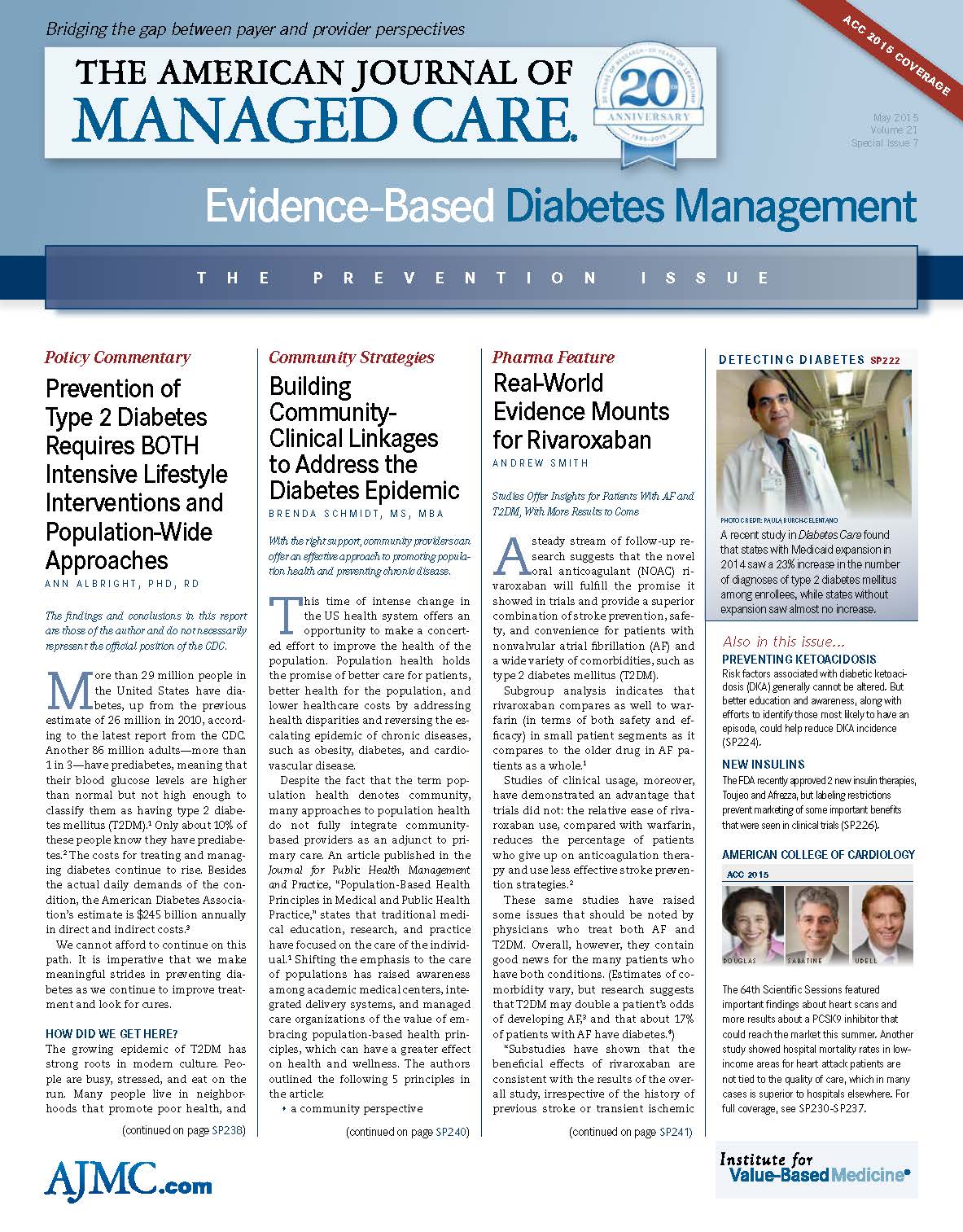- Center on Health Equity & Access
- Clinical
- Health Care Cost
- Health Care Delivery
- Insurance
- Policy
- Technology
- Value-Based Care
Hospitals in Low-Income Areas Scored High in MI Care, Even if Patients Had Poor Outcomes
Coverage from the 64th Scientific Sessions of the American College of Cardiology.
A study presented March 16, 2015, at the 64th Annual Scientific Session of the American College of Cardiology (ACC) found that the quality of the care for myocardial infarction (MI) was just as good if not better in hospitals serving low-income areas than elsewhere in the United States, even if those standards were not always reflected in patient outcomes.
The results could have policy implications, as CMS moves to tie Medicare reimbursement to readmission rates and patient outcomes. The study attaches data to a complaint raised by hospitals that serve the poor: strict attention to outcomes without accounting for how long term poverty affects health will cripple those institutions that most need federal dollars.
“Despite getting good care, some pa-tients may be prone to poor outcomes,” said Jacob A. Udell, MD, MPH, of the Women’s College Hospital and Peter Munk Cardiac Centre, University of Toronto. He presented the study “Socioeconomic Disparities and Quality of Hospital Care after Myocardial Infarction in A National Cardiovascular Data Registry” on March 16, 2015, in San Diego, California.
Many institutions affected by CMS’ reimbursement policies are academic medical centers that train physicians; if current policy trends continue, Medi-care penalties will affect medical edu-cation programs. Changes are deeply felt in cardiovascular care, because CDC statistics show poverty is associated with higher rates of diabetes, obesity, and tobacco use, all of which affect the ability to survive a CV event. These are the patients that many academic centers treat, in what Udell called the “risk-treatment paradox.”
“Patients who will be the worst off get the best care in teaching hospitals, because they do a great job with acute management,” he said.
Udell and his coauthors took a unique approach, one made possible by the rise of quality metrics reporting: pairing data from the ACC Foundation’s National Cardiovascular Data Registry (NCDR) and overlaying the MI quality scores for 390,692 cases with socioeconomic measures based on US Census data collected by zip code. (Use of zip code data as a proxy for individual wealth is a demographics measurement method of long standing.)
Specifically, researchers used data collected between July 2008 and December 2013 in a hospital registry that is part of ACC NCDR. Researchers looked at 6 quality measures during the acute phase of MI care and 6 different quality measures at discharge. For the analysis, researchers divided the hospitals into quintiles based on the socioeconomic data of their patient populations. Notably, there was greater separation from the lowest to highest quintile by average housing value $58,450 to $156,900 than there was by income, where the averages in the lowest and highest quintiles were $27,086 and $57,317, respectively.
Data revealed that hospitals in the lowest income quintile neighborhoods served patients who smoke, who were least likely to have private insurance coverage, and who were most likely to have diabetes. These results reflect CDC statistics that show 29.2% of adults who are below the poverty level smoke, compared with 16.2% of adults who are at or above the poverty level. Among adults under age 65 years, 30% of Medicaid en-rollees smoke, compared with 15% of adults with private insurance.
Overall quality scores which track how well hospitals performed procedures—were very close across all quintiles in the acute care phase. The lowest income quintile scored 91.0%, slightly better than the 90.2% scored by the highest income group. Scores for procedures at discharge were less favorable among all groups, and this area has been a tar-get of CMS. In this area, overall scores for the lowest income group lagged 70.0% to 76.7% for the middle income group, which scored highest.
Even though hospitals in the lowest income areas were adhering to quality standards, in some cases better than counterparts in wealthier areas, over-all mortality rates were higher than in most other quintiles (although lower than in the highest-income hospitals). Hospitals in the poorest areas had particularly high mortality rates due to heart failure or bleeding compared with death rates from MI itself.
Low scores on discharge performance by hospitals in the poorer areas will attract CMS’ attention. Reformers behind accountable care organizations, which take responsibility for patient health on an ongoing basis, would ask academic centers what they can do with community groups to promote continuity of care for their populations. However, not all lower-income Americans have gained access to coverage under the Affordable Care Act; the study showed that the largest number of institutions serving the poor was in the South, where several states have not expanded Medicaid.
A limitation of the study, which drew attention from commentators at the ACC session, was the 17% of patients who could not be analyzed because of missing or incomplete data for the socioeconomic analysis. However, Udell noted that the distribution was random; as a practical matter, this is still the type of data CMS uses to make policy decisions on Medicare.
The good news, the study concluded, is that quality initiatives appear to be working. Hospitals taking part “appear to provide equitable in-patient care to individuals living in the most disadvantaged neighborhoods compared with the rest of the nation,” researchers concluded.
Reference
Udell JA, Desai N, Li S, et al. Socioeconomic disparities and quality of in-hospital care after myocardial infarction in the National Cardiovascular Data Registry. Presented at the 64th Annual Scientific Sessions of the American College of Cardiology; March 16, 2015; San Diego, CA.

Telehealth Intervention by Pharmacists Collaboratively Enhances Hypertension Management and Outcomes
January 7th 2026Patient interaction and enhanced support with clinical pharmacists significantly improved pass rates for a measure of controlling blood pressure compared with usual care.
Read More

